The writing systems listed below have yet to be deciphered or have only been partially deciphered. In some cases the writing systems have been deciphered but the languages they were used to write remain a mystery.
A collection of symbols found on many of the artefacts dating from between 6,000 to 4,500 BC excavated from sites in south-east Europe, in particular from Vinča near Belgrade. There is no agreement on whether these symbols are a writing system.
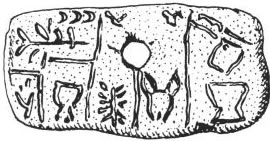
[top]
A collection of symbols used in the Indus valley of India between about 3,500 and 2,000 BC. Some believe that these symbols are non-linguistic, while others argue that they represent a Dravidian language.

[top]
A script which first appeared in about 2900 BC in Suse (Susa), the capital of Elam, in south-western Persia (modern Iran). It has yet to be deciphered and the language it represents in unknown.

[top]
A partially deciphered syllabic script used between about 2250 and 2220 BC in the kingdom of Suse in south-western Persia (modern Iran). It was named after Elam, the capital of Suse
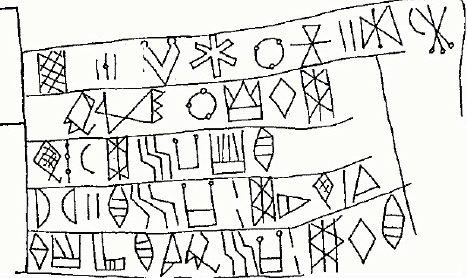
[top]
A script used between about 1800 and 1450 BC on Crete. Linear A is possibly related to Linear B but the language it was used to write is not known.
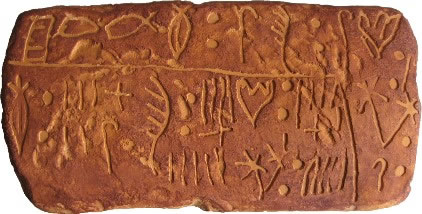
[top]
The Phaistos Disk was found in the Minoan Palace of Phaistos on Crete in 1908 and is thought to date from the 17th century BC. On it is inscribed an unknown script and there are many theories about the language it represents and what it means. No other evidence of this script has been found.
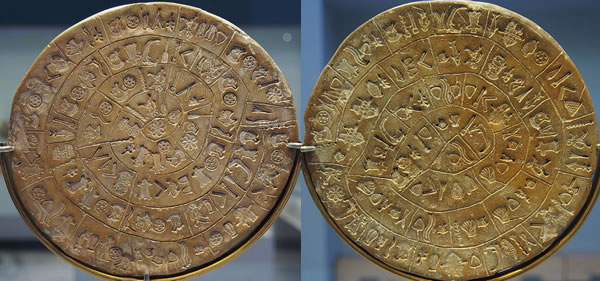
[top]
The Voynich Manuscript is named after Wilfrid M. Voynich, a Polish antiquarian book dealer who acquired it in 1912. It is a lavishly illustrated manuscript codex of 234 pages, written in an unknown script. One theory is that is was written sometime during the 13th century by a Franciscan friar, Roger Bacon (1214-1294). Many more attempts have been made to decipher the text but none have succeeded so far. Some think the manuscript is gibberish, and was probably a practical joke played on Rudolph II. It is housed in the Beinecke Library at Yale University in the USA, and has been carbon dated to the mid-15th Century.

Further details
http://www.voynich.nu
https://en.wikipedia.org/wiki/Voynich_manuscript
https://beinecke.library.yale.edu/collections/highlights/voynich-manuscript
http://ciphermysteries.com/the-voynich-manuscript
[top]
The Rohonc Codex (Rohonci-kódex) is named after the city of Rohonc, in western Hungary (now Rechnitz, Austria), where it was kept until 1907, when it was moved to Budapest. The origin of the codex is uncertain. In 1838 it was donated to the Hungarian Science Academy by Gusztav Batthyány, a Hungarian count, together with his entire library. It is written in an unknown language and script and has defied all attempts to decipher it.
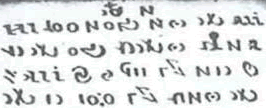
For more details of the Rohonc Codex, see:
http://en.wikipedia.org/wiki/Rohonczi_Codex
[top]
A script once used on Easter Island until the 1860s, after which knowledge of the script was lost. The language it represents is Rapa Nui, the Polynesian language spoken on Easter Island.

[top]
Writing systems: Abjads | Alphabets | Abugidas | Syllabaries | Semanto-phonetic scripts | Undeciphered scripts | Alternative scripts | Constructed scripts | Fictional scripts | Magical scripts | Index (A-Z) | Index (by direction) | Index (by language) | Index (by continent) | What is writing? | Types of writing system | Differences between writing and speech | Language and Writing Statistics | Languages
Page last modified: 05.07.22
[top]
You can support this site by Buying Me A Coffee, and if you like what you see on this page, you can use the buttons below to share it with people you know.

If you like this site and find it useful, you can support it by making a donation via PayPal or Patreon, or by contributing in other ways. Omniglot is how I make my living.
Note: all links on this site to Amazon.com, Amazon.co.uk
and Amazon.fr
are affiliate links. This means I earn a commission if you click on any of them and buy something. So by clicking on these links you can help to support this site.
[top]